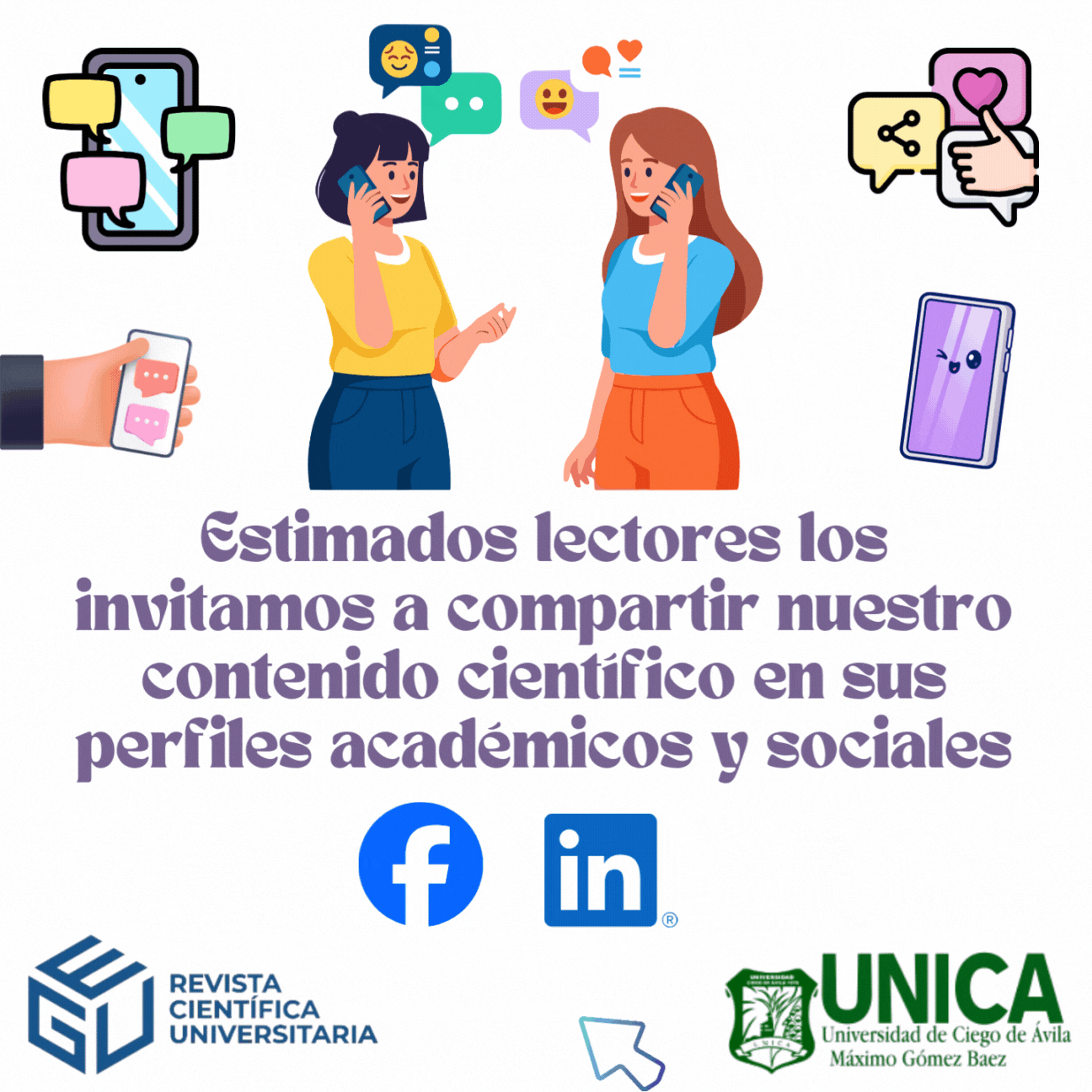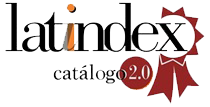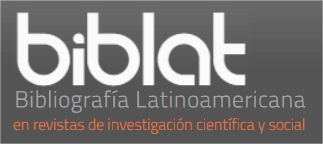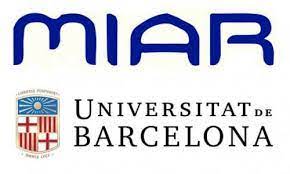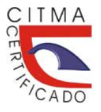
Submissions
Submission Preparation Checklist
As part of the submission process, authors are required to check off their submission's compliance with all of the following items, and submissions may be returned to authors that do not adhere to these guidelines.-
The request has not been previously published, nor has it been submitted to another journal (if it is a preprint, an explanation must be provided in comments to the editor).
- The file sent is in OpenOffice, Microsoft Word, RTF, or WordPerfect format.
- Web addresses have been added for references where possible.
- The text has 1.5 line spacing; font size is 12 points; italics are used instead of underlining (except URLs); and all illustrations, figures and tables are within the text in their corresponding place and not at the end.
- The text meets the stylistic and bibliographic conditions included in Guidelines for the author, in About the magazine
Author Guidelines
Thank you for choosing REGU to send us your article. The following instructions will ensure that we have everything we need to get your article through peer review, production, and publication without a hitch. Please take the time to read them carefully, as doing so will ensure that your article meets the journal's requirements.
About our Magazine
University Strategy and Management is an international peer-reviewed journal that publishes high-quality research. Original manuscripts and preprints reporting on main research results are accepted. Its purpose is to disseminate results in the scientific community and to incorporate them as a bibliographic resource available to interested parties.
REGU Peer Review and Ethics is committed to integrity and upholding the highest standards of review. Once the editor has assessed the suitability of your article, it will be independently reviewed by two anonymous expert referees, who will provide at least one report. Before you start, download the scientific article template.
The thematic profile of the magazine covers what is stated in the focus and scope of our magazine.
Types of Articles that are Published
Scientific and technological research article: Communicates unpublished results of research, including theoretical and/or methodological contributions, as well as practical experiences from which novel theoretical and methodological generalizations can be extracted.
Review articles: They present a critical analysis in some of the areas of interest of the journal, providing novel aspects and/or revealing gaps in science.
General Guidelines for Writing Manuscripts
The magazine appreciates the correspondence of the proposals presented by the authors with research and reflection works in the fields related to their thematic profile. The publication standards established below must be strictly followed:
- A Letter of Originality and the IA form will be sent along with the article if necessary.
- No more than five authors may participate in the preparation. It will be presented in Word, Arial font, size 11 points, line spacing 2.0 points, without space between paragraphs, with indentation in the first line of each text, margins of 2.54 cm. for each side and Letter paper format.
- The article will have a minimum of 4 000 words and a maximum of 7 500. Bold or underlined will be used as necessary, following the APA Standards of the 7th edition for its conformation. The headings and subheadings will be identified in bold.
- The structure of the article is as follows: cover; summary; up to five keywords (both in Spanish, English and Portuguese); introduction; materials and methods and/or methodology, depending on the type of article; Results and discussion; conclusions; and references.
- The title must have a maximum of 18 words. It must be synthetic, clear, attractive and written in Spanish, English and Portuguese.
- Main data of the authors: names and surnames, institution where they work, position held, country, email and ORCID link. Please check that it opens easily.
- The abstract must consider the following parameters: introduction, objective, method or methodology (depending on the type of article), results and conclusion, with its corresponding translation into English and Portuguese. It will not exceed 200 words. It will be done in a single paragraph, without quotes or acronyms. It must be understood without the reader needing to refer to the article.
- The introduction presents the background of the topic, the why and why of the research or study carried out. For example, it could contain the importance and current knowledge of the topic, some background, the problematic situation, the objective of the work and other elements necessary to present it, including quotes and references from different authors.
In the materials and methods and/or methodology section, the theoretical-methodological foundations of the topic discussed can be discussed; the procedures used explaining how and with what the research was carried out, what was analyzed, when, where and what method was applied to collect information. It must make a brief and concise reference to the methodology used.
- In results and discussion, present the main findings, analysis and interpretation. The findings must be supported with illustrations, tables or figures if necessary. The writing in this section is in the past tense. You must reveal your critical assessment of the results and they can be synthesized in tables or graphs of your own creation, as long as their appropriate interpretation is guaranteed. Both tables and figures must be cited in the body of the text, and statistical analyzes must always be carried out with an internationally recognized professional statistical package in its recent version. It must always be declared.
- Finally, the conclusions section must be written in the present tense, where the objective of the document is answered and fundamental ideas that can serve as a basis for future research are presented.
- All authors are invited to share their research data (open data) as complementary files at the time of submission. The following are considered research data: databases, techniques and instruments, questionnaires, among others.
Tables and Figures
- Tables must appear with a title preceded by the word Table plus the number that corresponds to the order of appearance. Both the word Table and the number will appear at the top of the table in Arial bold at 11 points and center justified. The column headings will be in Arial bold and center justified. At the bottom of the table the word Source will appear followed by the reference.
- Whenever graphs, diagrams or images are shown, these must be referred to as a figure. The figures will be identified with a title preceded by the abbreviation Fig. plus the number that corresponds to the order of appearance. The source is declared as explained for the tables.
- Images must have a quality of 300 dpi (dpi). They can appear in the body of the work as long as the information shown is part of the research results and does not constitute a complement.
- Tables and figures must be created in Word itself, avoid pasting them and send the file in Excel format. Up to 10 figures will be used in the investigation. They must not exceed the size of 100 Kb, nor may they have a width greater than 10 cm.
References
- They must conform to the style of the American Psychological Association (APA), 7th edition, 2019. This includes both the citations of sources in the text and in the list of references at the end of the document where hanging indents will be used.
- The veracity of the citations and references is the responsibility of the authors of the article. A minimum of 25 sources must be used for scientific and technological research articles and a minimum of 50 for review articles, where 90% of the referenced scientific articles are from the last five years. It is important to prioritize those sources that come from scientific journals indexed in Scopus, SciELO and the Web of Science.
- Use as a priority scientific articles or documents that have been published in indexed databases. References such as presentations from events, conferences, dissertations, theses or reports are not accepted.
- Up to 10 percent of self-citations are allowed per document with respect to the total of these in the entire document, and in the case of citations from other authors, only 3 to 4 citations are accepted depending on the level of relevance of the topic addressed.
-
In the list of references, you must include exclusively what is cited in the text and vice versa. Verify that there is complete correspondence in the writing of the surnames and the years in both appearances.
Example of citations and references in APA 7 standards
- How to cite a book, narrative citation: Sanmartín Bastida (2023)
- How to cite a book, parenthetical citation: (Sanmartín Bastida, 2023).
- Book Reference: Sanmartín Bastida, R. (2023). On the ventriloquism of the image in feminine spiritual authority. Springer. https://doi.org/10.1007/978-3-662-67088-0_16
- How to cite scientific articles online, narrative citation: Georgakakis et al. (2023)
- How to cite scientific articles online, parenthetical citation: (Georgakakis et al., 2023).
- Online scientific articles: Georgakakis, D., Wedell-Wedellsborg, M. E., Vallone, T., & Greve, P. (2023). Strategic leaders in multinational enterprises: A role-specific microfoundational view and research agenda. Journal of International Business Studies, 54(3), 514-537. https://doi.org/10.1057/s41267-022-00582-y
Other Suggestions
- For better reading, separate paragraphs from 7 to 12 lines.
- Notes must be at the foot of the page and numbered with Arabic characters. They must be up to 60 words long.
- Add reflections in your own words and thus you will avoid a high percentage of similarity, since the magazine accepts up to 15 %.
- Before sending the manuscript to the journal, carefully review compliance with all the editorial guidelines written in the template, as well as correct writing. We appreciate objective, precise and brief writing, as the language of science should be. Pay special attention to the grammatical rules of the Spanish language.
- Respect at all times the verbal tenses that must be used at all times during scientific research. The writing must have a logical character.
- You must download and be guided by the template at all times. Please do not make any changes to this template as the diagram specialist will be responsible for embellishing the article and making any other necessary changes.
Declaration of Conflicts of Interest
The corresponding author will declare the originality of the manuscript. It will also prove that the article has not been sent to another journal. You must declare that you are responsible for all the contents included in the article and that there are no plagiarism, conflicts of interest, or ethical conflicts, releasing the Magazine from any ethical and/or legal commitment.
Declaration of Author Contributions according to CRediT Taxonomy
Authors must declare the authorial contribution based on the CRediT Contributor Role Taxonomy. This is a high-level taxonomy that includes 14 roles and can be used to represent the roles typically played by those who collaborate on research results; and in this way, describe the specific contribution of each collaborator in the academic production.
The meaning of each role established by CRediT is explained below:
- a) Conceptualization: Ideas; formulation or evolution of general research goals and objectives.
- b) Data Curation: Management activities to annotate, produce metadata, delete data, and maintain research data, including software code where necessary to interpret the data itself for initial use and subsequent reuse.
- c) Formal analysis: Application of statistical, mathematical, computational or other formal techniques to analyze or synthesize study data.
- d) Acquisition of funds: Acquisition of financial support for the project that led to this publication.
- e) Research: Carry out a research process or conduct it, specifically carry out experiments or collect data or tests.
- f) Methodology: Development or design of methodology; model creation.
- g) Project administration: Responsibility for management and coordination of the planning and execution of the research activity.
- h) Resources: Provision of study materials, reagents, materials, patients, laboratory samples, animals, instrumentation, computer resources or other analysis tools.
- i) Software: Programming, software development; computer program design; implementation of computer code and supporting algorithms; testing existing code components.
- j) Supervision: Supervisory and leadership responsibility for the planning and execution of the research activity, including external mentoring to the core team.
- k) Validation/Verification: Either as part of the activity or separately, from replication, general reproducibility of results, experiments and other research results.
- l) Visualization: Preparation, creation and/or presentation of the published work, specifically visualization, presentation of data.
- m) Writing/original draft: Preparation, creation and/or presentation of the published work, specifically writing the initial draft (including substantive translation).
- n) Writing, review and editing: Preparation, creation and/or presentation of published work by those in the original research group, specifically critical review, commentary or revision, including pre- or post-publication stages.
Submission of Manuscripts
University Strategy and Management is registered through the Open Journal System (OJS), so your contributions must be made using this platform, which guarantees the registration of your contribution and the corresponding traceability automatically, as you progress. the editorial process. However, due to any irregularity or connectivity failure, you can manually execute this process through the email address of the magazineseguraygu@gmail.com or the email address of the executive editor ert931025@gmail.com
Steps to follow in the editorial flow
1. Reception of the article with its Letter of Originality, and the Form of ethical principles for IA publication (if necessary).
2. Throughout the editorial process, constant communication established between the responsible editor and the authors, as well as with experts, is vital; This mediating role guarantees that each step is carried out with objectivity and fluidity.
3. An editorial arbitration is carried out, detecting whether the article complies with the magazine's guidelines and is laid out according to the template; and suggestions are made with minor corrections if necessary (response within 7 days).
4. If the article is suitable, after editorial arbitration, it is processed by the Turnitin tool, to detect percentages of similarity and the use of AI (sent to authors if necessary, it may take a period of 7 days or more, depending of speed in response).
5. Once the article is received with the corrections made by the authors, it is assigned to a pair of experts for its corresponding arbitration (it may take 1 month or more, depending on the speed of the response).
6. The arbitration period and the response from the authors must take place over a period of 2 months, with the article passing the necessary arbitration rounds, seeking to raise the quality of the manuscript in its final version.
7. Once both experts accept the article, it is moved to Production, the editorial team reviews the final version and begins the layout process (reserving DOI in Zenodo, sending summaries to be translated, updating metadata on the platform, converting the article to the different formats to publish).
8. Publish the article on the platform, verify that there are no errors in the publication, and make the DOI public in Zenodo.
9. Prepare Certificates for the experts and Publication Letter for the authors, and subsequently send them via mail.
10. Promote and disseminate the published article through videos and flayers, which are published on different platforms, social and academic networks (Facebook, LinkedIn, X, WhatsApp groups).
Copyright Notice
Privacy statement
Names and email addresses entered in this magazine will be used exclusively for the purposes set out in this magazine and will not be provided to third parties or for use for other purposes.
By publishing in the magazine Economía y Gestión Universitaria, the magazine obtains copyright of the published document and does not transfer the copyright to others, but allows works derived from it, as long as they are used for non-commercial purposes and distributed under the same type of license, which is specified below:
Creative Commons Attribution-NonCommercial-ShareAlike 4.0. This license does not allow commercial use of the original work or any derivative works. Furthermore, the distribution of these derivative works must be done with a license equal to that governing the original work.
Privacy Statement
Names and e-mail addresses entered in this megazine will be used exclusively for the purposes state therein and will not be provided to third parties or for user for other purposes.

